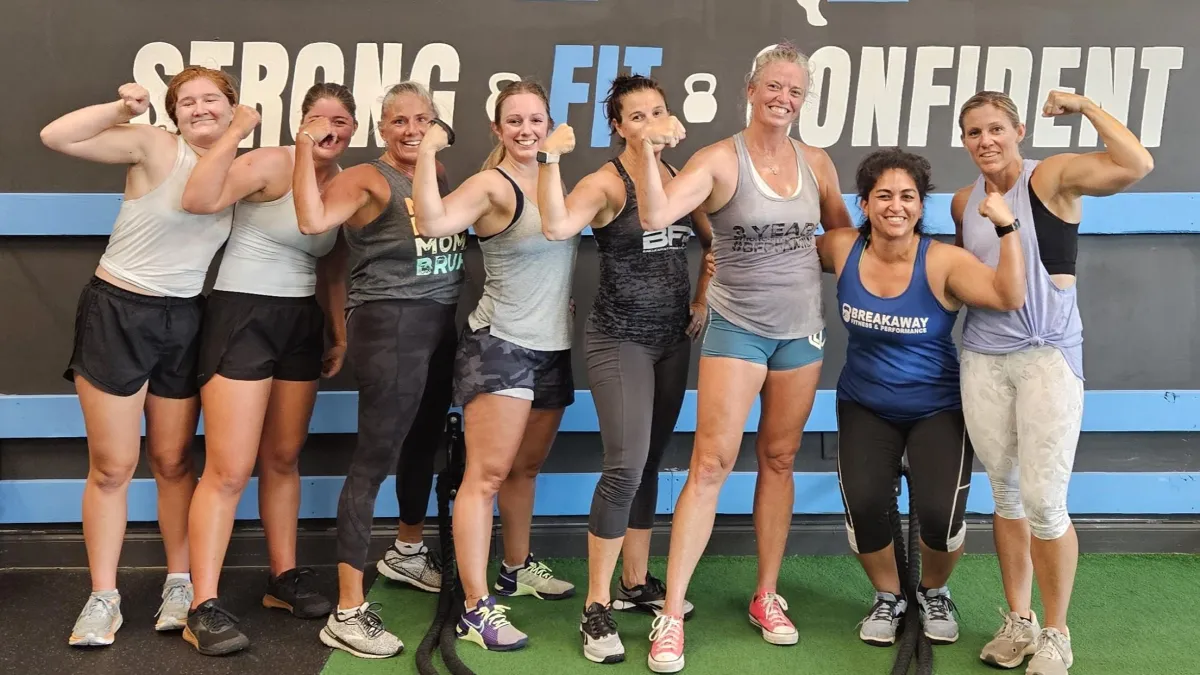WEIGHT LOSS & FITNESS BLOG

Why It’s Time We Stop Telling Girls They’ll “Bulk Up”
The Outdated Myth That’s Holding Our Daughters Back
For decades, parents have been told that girls shouldn’t lift weights — that it’s unsafe, or that they’ll “bulk up” and lose their femininity. But here’s the truth: that’s not only wrong, it’s robbing young girls of one of the most powerful tools for lifelong confidence, health, and strength.
Strength training done correctly is not about bodybuilding — it’s about learning how to move well, building strong bones and muscles, and developing a healthy relationship with one’s body.
As a coach — and as a dad to a daughter — this topic hits home for me. I want my little girl to grow up knowing that strength isn’t something to fear or hide. It’s something to celebrate. I’ve seen firsthand how learning to move with purpose builds confidence that carries far beyond the gym. Every girl deserves that same opportunity.
1️⃣ The Science: Girls Physically Can’t “Bulk Up” Like Boys
The fear of girls getting “too muscular” comes from misunderstanding hormones. Testosterone — the key driver of muscle size — is about 10 to 20 times higher in boys than in girls. That means even with resistance training, girls won’t gain large muscle mass like males do.
Instead, their improvements come from neuromuscular development (better coordination and control) and modest lean muscle increases that improve performance and body composition — not size.
In fact, the National Strength and Conditioning Association (NSCA) notes that resistance training in preadolescents improves strength by 30–50% after just 8–12 weeks, primarily from better muscle activation, not hypertrophy.
2️⃣ The Real Results: Coordination, Strength, and Confidence
When young girls lift weights under professional supervision, they improve balance, posture, and coordination. They reduce their risk of knee injuries — especially ACL tears, which are 2–8 times more common in girls than boys in sports like soccer and basketball. They develop body awareness and confidence that carries into all areas of life.
Lifting teaches girls to focus on what their bodies can do, not how they look. It reframes the conversation around strength, effort, and growth — exactly what our daughters need in a world obsessed with appearance.
3️⃣ The Confidence Shift: Redefining What It Means to Be Strong
When a girl learns to squat, press, or deadlift safely, she learns something much bigger than movement — she learns self-efficacy. She learns that her effort creates progress. That she’s capable. That she’s allowed to take up space.
Strength training becomes a vehicle for emotional strength. It’s not just about physical development — it’s about building girls who are confident enough to lead, to speak up, and to believe in their own ability to grow.
4️⃣ How to Safely Introduce Strength Training for Girls
If your daughter is active and curious about training, start with the basics:
Focus on bodyweight movements (squats, pushups, planks, hinges)
Learn proper form before adding resistance
Use light weights, resistance bands, or medicine balls
Always supervise and ensure training is guided by a qualified coach who understands youth development
At Breakaway Fitness & Performance, we design age-appropriate programs that emphasize fun, fundamentals, and confidence. Because every girl deserves to know the power of being strong.
Bottom Line
The idea that lifting weights makes girls “bulky” is outdated and untrue. What lifting really does is help them become:
Stronger
Healthier
More confident
More resilient
And as a parent, that’s exactly what I want for my daughter — and for yours.
References & Resources
Faigenbaum, A.D., et al. (2009). Youth Resistance Training: Updated Position Statement Paper from the National Strength and Conditioning Association (NSCA). Journal of Strength and Conditioning Research, 23(Supplement 5), S60–S79.
Lloyd, R.S., et al. (2014). National Strength and Conditioning Association Position Statement on Long-Term Athletic Development. Journal of Strength and Conditioning Research, 28(6), 1491–1509.
American Academy of Pediatrics (2020). Strength Training by Children and Adolescents. Pediatrics, 145(6): e20201011.
Myer, G.D., et al. (2008). The Effects of Plyometric vs. Dynamic Stabilization and Balance Training on Power, Balance, and Landing Force in Female Athletes. Journal of Strength and Conditioning Research, 20(2), 345–353.
British Journal of Sports Medicine (2017). Resistance Training and Health in Youth: An Umbrella Review.
Want to Help Your Daughter Get Started?
We’d love to show her how fun and empowering fitness can be.
👉https://bfpnc.com/youth-training


Are you Ready to become
sTRONG - FIT - cONFIDENT?
Click the Button To Start Your Journey Today!!

